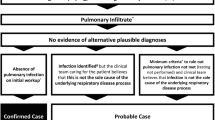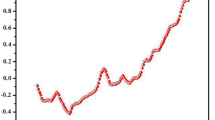Abstract
In this paper, we have made a comparative evaluation of the cytotoxicity and pathophysiological effects of mainstream smoke from cellulose acetate (CA)-filtered cigarettes with that of charcoal-filtered cigarettes developed in our laboratory. Previously, we had demonstrated that the mainstream smoke from an Indian CA-filtered commercial cigarette contains p-benzosemiquinone (p-BSQ), a major, highly toxic, long-lived water-soluble radical. Here, we have examined 16 brands of different CA-filtered cigarettes including Kentucky research cigarettes, and observed that mainstream smoke from all the cigarettes contains substantial amounts of p-BSQ (100–200 µg/cigarette). We also show that when the CA filter is replaced by a charcoal filter, the amount of p-BSQ in the mainstream smoke is reduced by 73–80%, which is accompanied by a reduction of carbonyl formation in bovine serum albumin to the extent of 70–90%. The charcoal filter also prevented cytotoxicity in A549 cells as evidenced by MTT assay, apoptosis as evidenced by FACS analysis, TUNEL assay, overexpression of Bax, activation of p53 and caspase 3, as well as emphysematous lung damage in a guinea pig model as seen by histology and morphometric analysis. The results indicate that the charcoal filter developed in our laboratory may protect smokers from cigarette smoke-induced cytotoxity, protein modification, apoptosis and emphysema.
Similar content being viewed by others
Abbreviations
- AECS:
-
aqueous extract of cigarette smoke
- BSA:
-
bovine serum albumin
- CA-filter:
-
cellulose acetate filter
- CF:
-
charcoalfiltered
- COPD:
-
chronic obstructive pulmonary disease
- CS:
-
cigarette smoke
- DAPI:
-
4′,6-diamidino-2-phenylindole dihydrochloride
- DI:
-
destructive index
- DMSO:
-
dimethyl sulphoxide
- ESR:
-
electron spin resonance
- H&E:
-
haematoxylin-eosin
- HPLC:
-
high performance liquid chromatography
- HRP:
-
horseradish peroxidase
- Lm:
-
mean linear intercept
- MTT:
-
3-(4,5-dimethylthiazol-2-yl)-2,5-diphenyl tetrazolium bromide
- NMR:
-
nuclear magnetic resonance
- PAH:
-
polycyclic aromatic hydrocarbon
- PI:
-
propidium iodide
- PS:
-
phosphatidyl serine
- TLC:
-
thin-layer chromatography
- TSNA:
-
tobacco-specific nitrosamines
- TUNEL:
-
terminal deoxynucleotidyl transferase-mediated deoxyuridine triphosphate nick end labelling
- UV:
-
ultraviolet
- VOC:
-
volatile organic compound
References
American Thoracic Society 1995 Standards for the diagnosis and care of patients with chronic obstructive pulmonary disease; Am. J. Respir. Crit. Care Med. 152 S77–S121
Banerjee S, Maity P, Mukherjee S, Sil A K, Panda K, Chattopadhyay D J and Chatterjee I B 2007 Black tea prevents cigarette smoke-induced apoptosis and lung damage; J. Inflammation 4 3
Banerjee S, Chattopadhyay R, Ghosh A, Koley H, Panda K, Roy S, Chattopadhay D J and Chatterjee I B 2008 Cellular and molecular mechanisms of cigarette smoke-induced lung damage and prevention by vitamin C; J. Inflammation 5 21
Banin S, Moyal L, Shieh S, Taya Y, Anderson C W, Chessa L, Smorodinsky N I, Prives C, et al. 1998 Enhanced phosphorylation of p53 by ATM in response to DNA damage; Science 281 1674–1677
Barnes P J, Shapiro S D and Pauwels R A 2003 Chronic obstructive pulmonary disease: molecular and cellular mechanisms; Eur. Respir. J. 22 672–688
Chatterjee I B 2005 Process for the isolation of a major harmful oxidant from cigarette smoke (US Patent No. 6,929,012)
Chatterjee I B 2006 Activated charcoal filter for effectively reducing p-benzosemiquinone from the mainstream cigarette smoke (US Patent No. 7,025,067 B2)
Chatterjee I B 2008 Activated charcoal filter for effectively reducing p-benzosemiquinone from the mainstream cigarette smoke (Japan Patent No. 3966856)
Chaterjee I B 2008 Process for the isolation of a major harmful oxidant from cigarette smoke (Korea Patent No. 10-0868687)
Chatterjee I B 2008 Process for the isolation of a major harmful oxidant from cigarette smoke (Japan Patent No. 4094545)
Chatterjee I B 2008 Activated charcoal filter for effectively reducing p-benzosemiquinone from the mainstream cigarette smoke (Europe Patent No. EP1434503 (validated in UK, Italy, France, Spain, Germany, Portugal and Greece))
Chen P X and Moldoveanu S C 2003 Mainstream smoke chemical analysis for 2R4F Kentucky reference cigarette; Beitr. Tabakforsch. 20 448-458
Chouchane S, Wooten J B, Tewes F J, Wittig A, Müller B P, Veltel D and Diekmann J 2006 Involvement of semiquinone radicals in the in vitro cytotoxicity of cigarette mainstream smoke; Chem. Res. Toxicol. 19 1602–1610
Coggins C R E and Gaworski C L 2008 Could charcoal filtration of cigarette smoke reduce smoking-induced diseases? A review of the literature; Regulatory Toxicology and Pharmacology 50 359–365
Doolittle D J, Lee C K, Ivett J L, Mirsalis J C, Ricco E, Rudd C J, Burger G T and Hayes A W 1990 Comparative studies on the genotoxic activity of mainstream smoke condensate from cigarettes which burn or only heat tobacco; Environ. Mol. Mutagen. 15 93–105
Dunnill M S 1962 Quantitative methods in the study of pulmonary pathology; Thorax 17 320–328
Fehrenbach H 2006 Animal models of pulmonary emphysema: a stereologist’s perspective; Eur. Resp. Rev. 15 136–147
Han-Jae S, Hyung-Ok S, Jung-Ho H, Chul-Hoon P, Hyeong-Seok L, Dong-Wook L, Keon-Joong H and Hak-Chul H 2009 Effect of cigarette filters on the chemical composition and in vitro biological activity of cigarette mainstream smoke; Food Chem. Toxicol. 7 192–197
Harris J E, Thun M J, Mondul M L and Calle E E 2004 Cigarette tar yields in relation to mortality from lung cancer in the caner prevention study II prospective cohort, 1982–8; BMJ 328 72–76
International Agency for Research on Cancer 2002 IARC monographs on the evaluation of the carcinogenic risk of chemicals to humans (Lyon, France: IARC) p. 83
Kluck R M, Bosy-Wetzel E, Green D R and Newmeyer D D 1997 The release of cytochrome c from mytochondria: a primary site for Bcl-2 regulation of apoptosis; Science 276 1132–1136
Laugesen M and Fowles J 2006 Marlboro UltraSmooth: a potentially reduced exposure cigarette?; Tob. Control 15 430–435
Lopez A D and Murray C C 1998 The global burden of disease, 1990–2020; Nat. Med. 4 1241–1243
Marugame T Sobue T, Nakayama T Suzuki T, Kuniyoshi H, Sunagawa K, Genka K, Nishizawa N et al. 2004 Filter cigarette smoking and lung cancer risk; a hospital-based case-control study in Japan; Br. J. Cancer 90 646–651
Misra A, Chattopadhyay R, Banerjee S, Chattopadhyay D J and Chatterjee I B 2003 Black tea prevents cigarette smoke-induced oxidative damage of proteins in guinea pigs; J. Nutr. 133 2622–2628
Mosmann T 1983 Rapid colorimetric assay for cellular growth and survival: application to proliferation and cytotoxicity assays; J. Immunol. Methods 65 55–63
Muscat J E, Takezaki T, Tajima K and Stellman SD 2005 Charcoal cigarette filters and lung cancer risk in Aichi Prefecture; Japan Cancer Sci. 96 283–287
Panda K, Chattopadhyay R, Ghosh M K, Chattopadhyay D J and Chatterjee I B 1999 Vitamin C prevents cigarette smoke induced oxidative damage of proteins and increased proteolysis; Free Radic. Biol. Med. 27 1064–1079
Panda K, Chattopadhyay R, Ghosh M K, Chattopadhyay D J and Chatterjee I B 2000 Vitamin C prevents cigarette smoke induced oxidative damage in vivo; Free Radic. Biol. Med. 29 115–124
Panda K, Chattopadhyay R, Ghosh M K, Chattopadhyay D J and Chatterjee I B 2001 Cigarette smoke-induced protein oxidation and proteolysis is exclusively caused by its tar phase: prevention by vitamin C; Toxicol. Lett. 123 21–23
Pauwels R A and Rabe K F 2004 Burden and clinical features of chronic obstructive pulmonary disease (COPD); Lancet 364 613–620
Pryor W A, Deoley M M and Church D F 1986 The inactivation of α1-proteinase inhibitor by gas-phase cigarette smoke: protection by antioxidants and reducing species; Chem. Biol. Interact. 57 271–283
Pryor W A, Prier D G and Church D F 1983 Electron spin resonance study of mainstream and side stream cigarette smoke: nature of the free radicals in gas phase smoke and cigarette tar; Environ. Health Perspect. 47 345–355
Pryor W A, Stone K, Zang L Y and Bermudez E 1998 Fractionation of cigarette tar extracts: fractions that contain the tar radical cause DNA damage; Chem. Res. Toxicol. 11 441–448
Polzin G M, Zhang L, Hearn B A, Tavakoli A D, Vaughan C, Ding Y S, Ashley D L and Watson C H 2008 Effect of charcoal-containing cigarette filters on gas phase volatile inorganic compounds in mainstream cigarette smoke; Tob. Control 17 i10–i16
Ramage L, Jones A C and Whelan C J 2006 Induction of apoptosis with tobacco smoke and related products in A549 lung epithelial cells in vitro; J. Inflamm. 3 3
Rao J K, Letada P, Haverstick D M, Herman M M and Savory J 1998 Modifications to the in situ TUNEL method for detection of apoptosis in paraffin-embedded tissue sections; Ann. Clin. Lab Sci. 28 131–137
Robbesom A A, Versteeg E M M, Veercamp J H, van Krieken J H J M, Bulten H J, Smits H T J, Willems L N A, van Herwaarden C L A, et al. 2003 Morphological quantification of emphysema in small human lung specimens: comparison of methods and relation with clinical data; Mod. Pathol. 16 1–7
Saetta M, Shiner R J, Angus G E, Kim W D, Wang N, King M, Ghezzo H and Cosio M G 1985 Destructive index: a measurement of lung parenchymal destruction in smokers; Am. Rev. Respir. Dis. 131 764–769
Schraufstatter I U, Revak S D and Cochrane C G 1984 Protease and oxidants in experimental pulmonary inflammatory injury; J. Clin. Invest. 73 1175–1184
Sherman C B 1991 Health effect of cigarette smoking; Clin. Chest Med. 12 643
Shah P K and Helfant R H 1988 Smoking and coronary artery diseases; Chest 94 449–452
Slama K 2008 Global perspective on tobacco control. Part I. The global state of the tobacco epidemic; Int. J. Tuberc. Lung Dis. 12 3–7
Snider G L, Lucey E C and Stone P J 1985 Animal models of emphysema; Am. Rev. Respir. Dis. 133 149–169
Stewart B W and Kleihues P (eds) 2003 World cancer report 2003 (Lyon, France: International Agency for Research on Cancer) pp 21–28
Thornberry N A and Lazebnik Y 1998 Caspases enemies within; Science 281 1312–1316
Tsujimoto Y 1998 Role of Bcl-2 family proteins in apoptosis: apoptosomes or mitochondria?; Genes Cells 3 697–707
Tuder R M, Petrache I, Elias J A, Voelkel N F and Henson P M 2003 Apoptosis and emphysema: the missing link; Am. J. Respir. Cell Mol. Biol. 28 551–554
US Department of Health and Human Services 1988 The health consequences of smoking: nicotine addiction: a report of the Surgeon General (Rockville, MD: Center for Health Promotion and Education, Office on Smoking and Health) DHHS Publication No (CDC) 88-8406
US Department of Health and Human Services 1998 Reducing the health consequences of smoking: 25 years of progress. A report of the Surgeon General (Rockville, MD: US Department of Health, Centers for Disease Control, Center for Chronic Disease Prevention and Health Promotion, Office on Smoking and Health) DHHS Publication No (CDC) 89-8411
Wald N J and Hackshaw A K 1996 Cigarette smoking: an epidemiological overview; Br. Med. Bull. 52 3–11
Whiteside G, Cougnon N, Hunt S P and Munglani R 1998 An improved method for detection of apoptosis in tissue sections and cell culture, using the TUNEL technique combined with Hoechst stain; Brain Res. Brain Res. Protoc. 2 160–164
Whiteside G and Munglani R 1998 TUNEL, Hoechst and immunohistochemistry triple-labeling: an improved method for detection of apoptosis in tissue sections—an update; Brain Res. Brain Res. Protoc 3 52–53
Wright J L and Churg A 1995 Smoke-induced emphysema in guinea pigs is associated with morphometric evidence of collagen breakdown and repair; Am. J. Physiol. Lung Cell Mol. Physiol. 268 L17–L20
Wright J L and Churg A 2002 A model of tobacco smoke-induced airflow obstruction in the guinea pig; Chest 121 188S–191S
Wright J L, Farmer S G and Churg A 2002 Synthetic serine elastase inhibitor reduces cigarette smoke-induced emphysema in guinea pigs; Am. J. Respir. Crit. Care Med. 166 954–960
Author information
Authors and Affiliations
Corresponding author
Rights and permissions
About this article
Cite this article
Dey, N., Das, A., Ghosh, A. et al. Activated charcoal filter effectively reduces p-benzosemiquinone from the mainstream cigarette smoke and prevents emphysema. J Biosci 35, 217–230 (2010). https://doi.org/10.1007/s12038-010-0026-2
Received:
Accepted:
Published:
Issue Date:
DOI: https://doi.org/10.1007/s12038-010-0026-2




